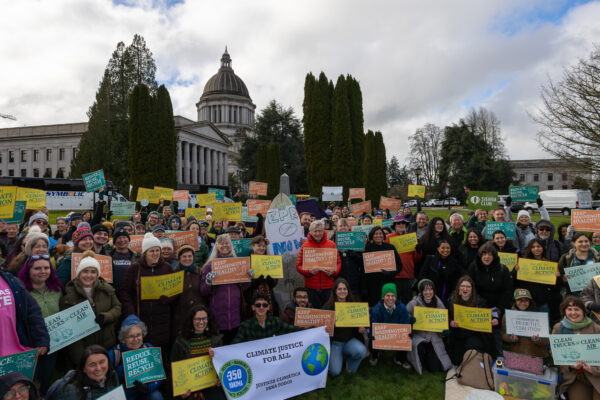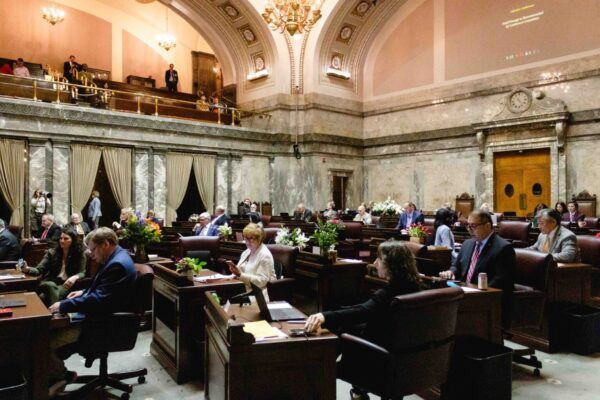To celebrate, we took a plunge into Puget Sound!
Over 100 Washingtonians participated in the Puget Plunge on May 8 to celebrate the No Discharge Zone. We were joined by advocates for Puget Sound including Puget Sound Partnership Executive Director Sheida Sahandy, Puget Sound Partnership Chair Jay Manning, Former EPA Region 10 Administrator Dennis McLerran, Washington Scuba Alliance, Pacific Shellfish Growers Association, open water swimmers, Alki Kayaks, and more! Watch a video from the day…
What’s in the water?
Sewage contains bacteria and other pathogens that threaten shellfish beds and public health. Even partially treated sewage still contains high concentrations of bacteria and other microorganisms that can make people sick. Each year, shellfish beds must be shut down due to pollution and often the source cannot be identified. Puget Sound’s waters are highly connected, and pollution released in one location worsens water quality many miles away.
Pump, don’t dump!
Within the No Discharge Zone boundaries, boaters are required to hold sewage on board their vessels for disposal at pump-out facilities or outside the zone’s boundaries. (Gray water from on-board sinks, showers, and other non-toilet uses is not restricted by this rule.) Fortunately, the vast majority of commercial and recreational vessels already comply with this rule. Over 100 pumpout stations serve the region and provide low- or no-cost convenient service.
Six years, 70,000 comments, one rule
Work on this scale doesn’t come easy – and WEC is there every step of the way to make sure Puget Sound is protected. After two years of meetings with industry groups, environmental organizations, government agencies, and the public, the Department of Ecology released a draft petition for the No Discharge Zone in 2014. Another two years of extensive stakeholder engagement led to the final petition to the US EPA in July 2016. After receiving over 70,000 comments in support, the EPA made their final ruling.
What you can do
If you own or ride in a boat or vessel, find pumpout resources at pumpoutwashington.org.




